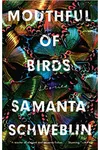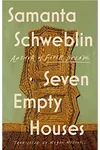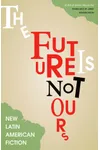Picture an Argentine storyteller who weaves nightmares into everyday life—meet Samanta Schweblin! With her haunting prose and surreal tales, she’s taken the literary world by storm, blending reality and dread in works like Fever Dream and Little Eyes. Translated into over 35 languages, Schweblin’s stories linger like a strange dream you can’t shake.
Born in Buenos Aires in 1978, Schweblin has become a leading voice in contemporary Latin American literature, earning Man Booker International Prize nominations and a cult following. Her knack for turning the mundane into the unsettling makes her a must-read for fans of psychological thrillers and magical realism.
The Making of Samanta Schweblin
Growing up in Buenos Aires during the shadow of Argentina’s dictatorship, Schweblin was surrounded by art and unease. Her grandfather, a renowned artist, sparked her creativity, taking her on adventures to steal books and sneak into plays. She studied cinematography at the University of Buenos Aires, honing her knack for vivid storytelling. At 16, she joined writing workshops, a rite of passage in Argentina’s literary scene, where she crafted her first stories in cozy living rooms.
By 22, Schweblin was a published author, defying the odds in a male-dominated industry. Her debut collection, El núcleo del disturbio (2002), won Argentina’s National Fund for the Arts prize, marking her as a rising star. A move to Berlin in 2012, fueled by a DAAD scholarship, gave her the space to write her breakout novel, Fever Dream.
Samanta Schweblin’s Unforgettable Stories
Schweblin’s writing is a tightrope walk between the ordinary and the eerie. Her stories, often compared to Borges and Cortázar, use spare prose to unravel family ties, environmental dread, and human fragility. She loves open endings, letting readers squirm in ambiguity. Her works feel like fever dreams—intense, disorienting, and impossible to forget.
Fever Dream (2014), her debut novel, is a chilling dialogue between a dying mother and a mysterious boy, set against Argentina’s toxic soy fields. It won the Shirley Jackson Award and was adapted into a 2021 Netflix film. Mouthful of Birds (2009), a short story collection, blends the grotesque with the intimate, earning the Casa de las Américas Prize. Little Eyes (2018) explores technology’s dark side through creepy, voyeuristic “kentukis,” while Seven Empty Houses (2015) dives into domestic terrors, snagging a National Book Award for Translated Literature in 2022.
Her latest, El buen mal (2025), continues her streak of unsettling tales, with critics praising its mysterious atmospheres. Schweblin’s stories don’t scream horror—they whisper it, making the familiar feel monstrous.
Why Samanta Schweblin Matters
Schweblin’s impact lies in her ability to make us question the world around us. Her stories tackle big issues—pesticide poisoning, tech overreach, fractured families—through intimate, human lenses. She’s a bridge between Latin American literary giants and a global audience, with translations in over 35 languages. Her work resonates with readers who crave stories that haunt long after the last page.
In a world of fleeting attention spans, Schweblin’s concise yet powerful prose proves short stories can pack a punch. She’s inspired a new wave of Latin American writers, like Mariana Enriquez, to explore the uncanny in everyday life. Her Berlin base hasn’t dulled her Argentine roots—she calls her homeland her “board game,” a place to test her darkest ideas.
- Born: 1978, Buenos Aires, Argentina
- Key Works: Fever Dream, Mouthful of Birds, Little Eyes, Seven Empty Houses
- Awards: Shirley Jackson Award, National Book Award for Translated Literature, Casa de las Américas Prize
- Fun Fact: She runs writing workshops in Berlin, continuing Argentina’s literary tradition.
Snag Fever Dream or Mouthful of Birds and dive into Samanta Schweblin’s thrilling, unsettling world!





